In the first of three articles, we recap the recent symposium ‘Dense and Green Building Typologies: Architecture as an Urban Ecosystem’. Part 1 looks at government perspectives.

Gardens by the Bay by CPG, Grant Associates & Wilkinson Eyre Architects. Image courtesy of CPG
September 20th, 2017
In many ways, Singapore is a global leader in the integration of green spaces with architecture and urban design. Density and greenery may seem to be contradictory, but our little green island has repeatedly shown how the two concepts can in fact be mutually dependent and synergistic, creating the potential for a city environment that is dense yet highly liveable. A holistic approach to ‘green buildings’ is crucial given the spectrum of potential design, economic, social and ecological benefits. This is something we explore further in the upcoming Oct/Nov issue of Cubes.
An extensive day-long symposium was held on 30 August at The URA Centre specifically to explore the perspectives of various stakeholders on dense and green development. It was organised by the ‘Dense and Green Building Typologies’ research group at the Future Cities Laboratory at the Singapore-ETH Centre. The group is led by Prof Dr Thomas Schroepfer from SUTD and Prof Dr Sacha Menz from ETH Zurich.
Schroepfer and Menz organised 16 speakers into three categories – Government Perspectives, Client Perspectives, and Architect and Landscape Architect Perspectives – for a thorough analysis of dense and green development from a variety of angles. In three articles, we’ll recap the key messages presented by each group.
The Government Perspectives session opened the day’s proceedings. Khoo Teng Chye, Executive Director of the Ministry of National Development’s Centre for Liveable Cities (CLC), discussed Singapore’s ‘urban systems approach’ to liveability and density, and his hope that Singapore will be the first ‘City in Nature’ – that is, a city in a system of gardens and water. His recommendations for a ‘City in Nature’ were to firstly, develop a ‘City in Nature’ plan (not just parks and water bodies plans), and secondly, to make nature-sensitive urban design a condition of land sales.
Tan Shao Yen, CEO of CPG Consultants, discussed the potential for biophilic design to increase human wellbeing, activity and interaction, leading to a positive cycle. He discussed integrative design and resource management through the lens of various projects.
Dr Cheong Koon Hean, CEO of the Housing and Development Board (HDB), discussed a biophilic design approach for new public housing towns. She mentioned the HDB’s patented ‘Prefabricated Extensive Green’ roof-tray system for plants, as well as examples of water-sensitive design in the HDB context. The HDB is currently carrying out research for a biodiversity index (with 19 indicators) for residential towns, as well as a landscape framework to enhance the environment of high-density towns.
Yeo Meng Tong, Senior Director at the National Parks Board, recounted Singapore’s shift from ‘Garden City’ to ‘City in a Garden’ before discussing the potential of 3D thinking for space optimisation on top of land optimisation. He presented a concept for ‘sinkhole’ development, where a large landscaped courtyard is excavated between towers that contain commercial functions below the ground line and residential units above.
Stay tuned for upcoming articles on Client Perspectives and Architect/Landscape Perspectives from the symposium!
INDESIGN is on instagram
Follow @indesignlive
A searchable and comprehensive guide for specifying leading products and their suppliers
Keep up to date with the latest and greatest from our industry BFF's!
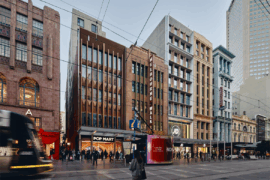
Merging two hotel identities in one landmark development, Hotel Indigo and Holiday Inn Little Collins capture the spirit of Melbourne through Buchan’s narrative-driven design – elevated by GROHE’s signature craftsmanship.
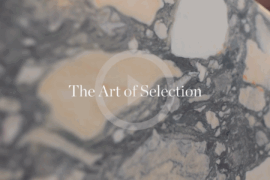
CDK Stone’s Natasha Stengos takes us through its Alexandria Selection Centre, where stone choice becomes a sensory experience – from curated spaces, crafted details and a colour-organised selection floor.
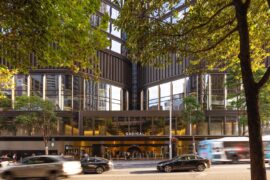
Rising above the new Sydney Metro Gadigal Station on Pitt Street, Investa’s Parkline Place is redefining the office property aesthetic.

London-based design duo Raw Edges have joined forces with Established & Sons and Tongue & Groove to introduce Wall to Wall – a hand-stained, “living collection” that transforms parquet flooring into a canvas of colour, pattern, and possibility.
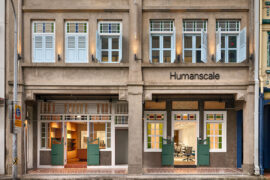
Humanscale’s new showroom is about the modern workplace, with ergonomic excellence, sustainable design and architectural heritage in Singapore.

With Steelcase having reopened its refreshed WorkLife Showroom in Singapore this year, we spoke to Navedita Shergill about some key workplace macro shifts identified in their research.
The internet never sleeps! Here's the stuff you might have missed

Tappeti’s latest rugs have been unveiled at one of Luigi Rosselli’s stunning Sydney coastal homes alongside furniture by Design Nation.

Indesign Media is aware of recent reports raising serious concerns about Australian architectural photographer Derek Swalwell.
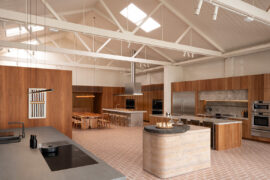
The Fisher and Paykel Melbourne Experience Centre by Clare Cousins Architects with Fisher and Paykel Design and Alt Group has been awarded The Retail Space at the INDE.Awards 2025. As a winning project, it redefines the possibilities of retail architecture by creating an immersive, material rich environment shaped by place, culture and craft.